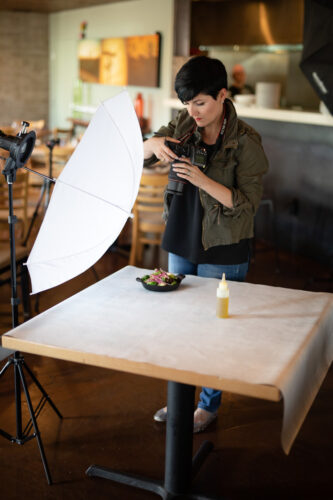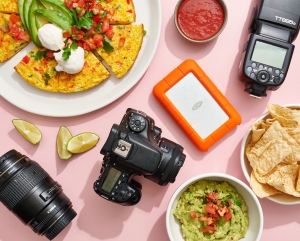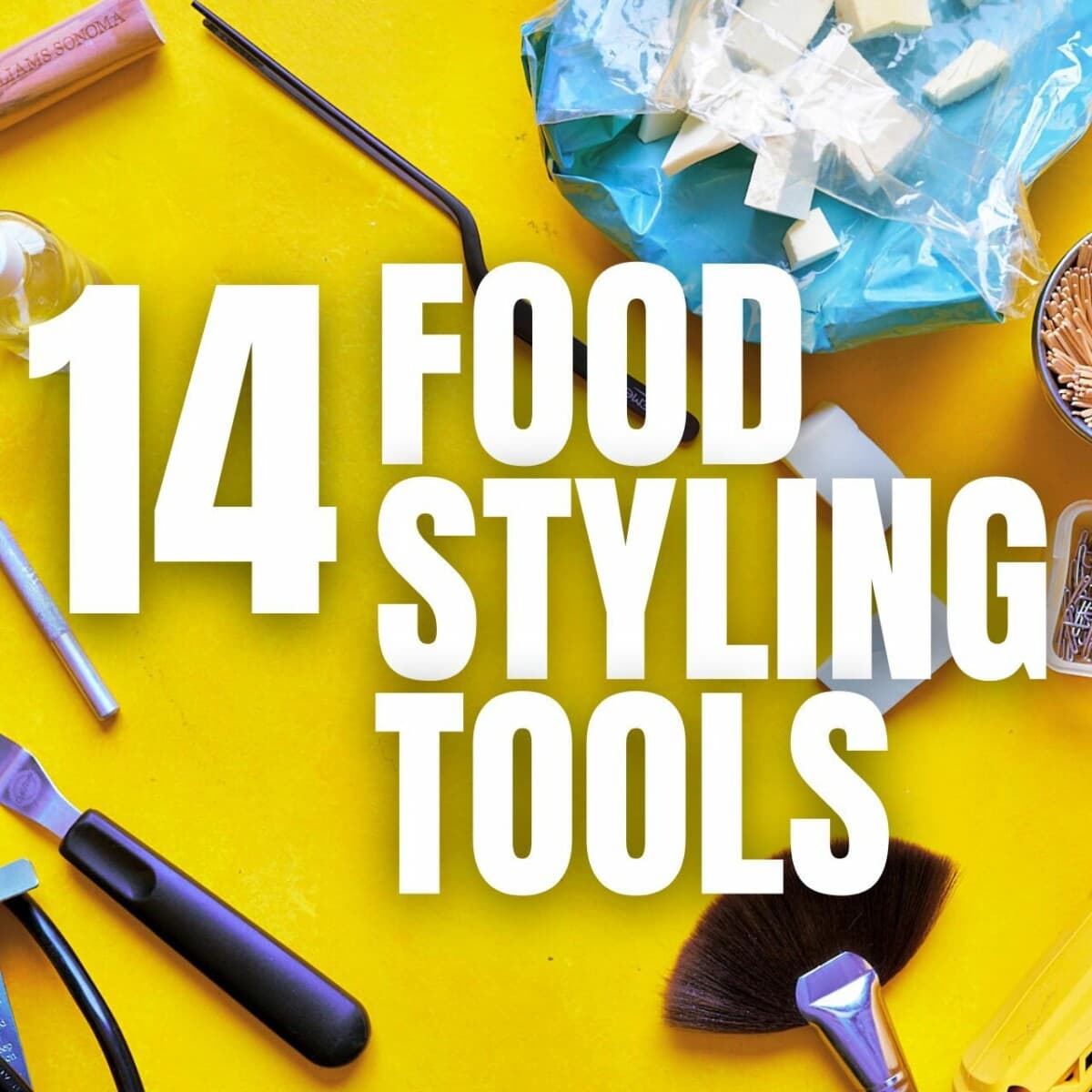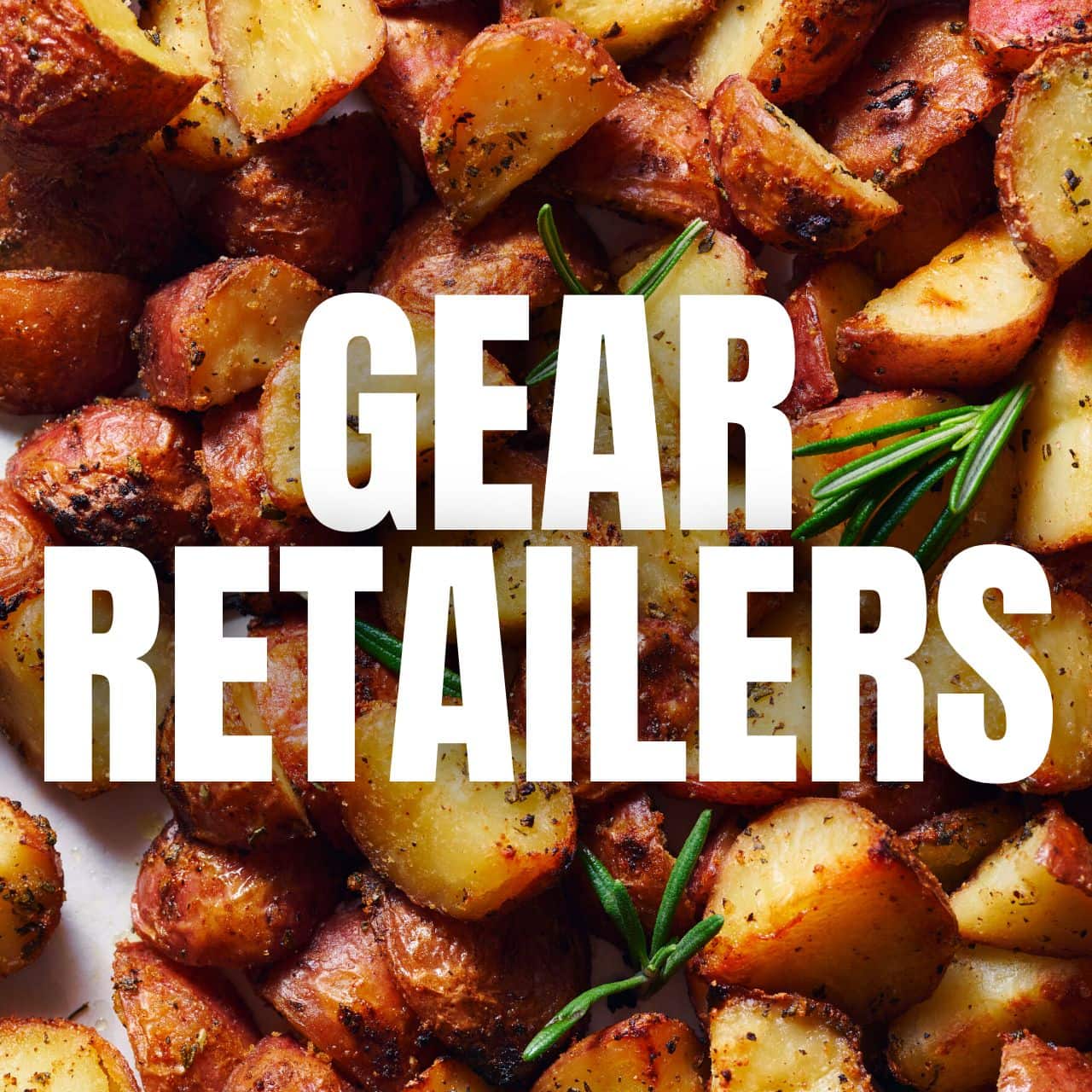You’re starting a food photography business. Congrats!
The demand for food photography, videography and content creation is greater than ever. You can turn your awesome skills into a full time business. But maybe you didn’t intend to become a small business owner and you need some pointers on where to start.

I was super fortunate when I first started that my Dad was a business owner. He helped set me on the right path with the formal aspects of starting a business. And it’s my pleasure to get to pass on the same insights to you.
These are four essential steps to helping establish your business and ensure you’re getting started with the right infrastructure in place.
If you’d like to watch the YouTube video where I share this list it’s linked at the bottom of this post.
Now let’s get your business started!
Step 1: Register Your Food Photography Business
Depending on where you live and work, there is some sort of paperwork that needs to be filed in order for this new business you’ve started to be recognized as a formal entity.
Perhaps you’re thinking, “oh, I’m not going to have a bunch of employees. I’m going to keep it small and run my business as a sole proprietor.”
The question I would ask you, “Do you want to be successful?”
If you do, I encourage you to take this commitment and your business seriously. Limiting your perspective on your company from the outset simply because you’re nervous about filling out paperwork is selling yourself short.
Protect Your Privacy
Even if you are a company of one, there are also practical implications for registering your business. Such as when you register your business with the Internal Revenue Service (IRS) here in the US they give you an Employer Identification Number (EIN).
As you do business with clients they will request you fill out a W9 for tax purposes (US specifcally) because they are required to report what they paid subcontractors. When you fill out this form it asks for either your EIN (Employer Identification Number) or your Social Security Number. I prefer to list an EIN because it’s important to me for privacy and security to keep my Social Security Number private.
How to Register Your Business
As for the details of getting registered, that will vary based on your location. I have linked information that should help to get you moving in the right direction.
More information based on location:
And another helpful place for information about registering in your city, state and country is your bank. They require an EIN here in the US in order to set up a business bank account, so they have a compelling reason to help you get set up properly. If you contact the local branch where you plan to do your banking, let them know you need help and they will likely have you come in to meet with a banker and to start the paperwork.
This leads me to our next step.

Step 2: Set Up Your Business Bank Account
When I tell people that it’s important to set up a business bank account when they start their business I frequently hear, “But I already have a bank account. Can’t I just use my personal banking?”
My answer: Yes, you can, but there are three reasons I think getting started with this right away is important.
- It’s a sign that you’re taking your business seriously. Back to Step #1, this is a way to mentally challenge your self-limiting beliefs and adopt the perspective that you are taking your business seriously. Using your personal accounts feels safe and doesn’t require you to make a formal commitment to running a business.
- You can better gauge your business income and expenses. I remember the very first time I paid for a networking lunch with a local PR person with my business debit card. I had about $400 in the account from one client and some other personal money I had used to start the account. I remember seeing that transaction and how it impacted my business’ bottom line, as well as feeling the gravity of paying for something with money that I had worked hard to earn. If you’ve never felt that before, it’s an important experience. Because the foundation of a profitable business is having a handle on the money coming into the business (income) and money going out of the business (expenses) and making sure your expenses don’t exceed your income.
- You can set money aside for paying your taxes Now that you own a business you are responsible for paying your taxes. If you have previously worked for other people, depending on how you set up your deductions in your tax paperwork when you started the job, they were likely taking taxes out of your income and paying them to the government on your behalf. As a small business owner, you receive payments from clients for the work you do and when you calculate your business income at the end of the year or quarter, you will owe a portion of that income in taxes to the government. In order to ensure that you have adequate cash on hand to pay your taxes when they’re due, I recommend automatically moving money to your business savings account whenever clients pay you for your services. In terms of how much to save and rates, I recommend seeking out a tax professional such as an accountant or consult your local government small business resources linked in Step 1. Not having cash on hand to pay your taxes when they are due can result in serious penalties and has been the undoing of many small businesses. Always remember to save for taxes!
Some banks assess fees based on a minimum balance or have requirements that are important to consider. I recommend doing some research as you’re considering where to do your banking for your business.
Step 3: Get Insurance
This might seem a little premature to jump into insurance right from the get-go, but speaking from personal experience this is one of the things I wish I had done sooner than I did.
I put off insuring my equipment because I didn’t want to take on any expenses. About a year into owning my business, our home was broken into and some of my equipment was stolen. I didn’t have insurance at the time so I was responsible for replacing the things that were taken.
Granted, I didn’t have top of the line equipment and fortunately everything that was taken was replaceable. But, with a small equipment insurance policy, I could have replaced what I needed for my business without such a big hit to my bottom line.
Take Inventory
Perhaps, take a moment right now to take a mental inventory of the equipment you have that you use in your business and how much it would cost to replace. Cameras, lenses, lights, computers, batteries, and memory cards. It all starts to add up.
As for where to find insurance, you might already have an insurance rep who handles other insurance in your life, but if you don’t, I’d recommend seeking out your professional photography organizations like PPA here in the US.
Also check out some of these resources recommended by the folks at PetaPixel for getting photography insurance.
Health insurance, life insurance, retirement investments, workers compensation and other benefits traditionally provided by employers will be worth considering depending on your personal needs and situation.
This is also something to revisit on an annual basis or even twice a year in your food photography business, particularly in the first few years and during seasons of growth. Take an inventory and make sure that your policies reflect any new equipment you purchased and cover any additional ways in which your business has changed.

Step 4: Set Up Your Bookkeeping
Bookkeeping refers to the practice of keeping track of your business income, expenses and profit. We covered the importance of keeping track of your business finances as a barometer of the health and profitability of your business in Step 2.
Taking that one step further, you will also want to set up a method of bookkeeping for your business for, once again, that pesky thing called paying taxes. You will need to report income as well as expenses and the different categories of expenses in consideration for deductions.
As a reminder, I’m not a tax professional, so be sure to consult one to get more information about what will be best for you.
There are a lot of bookkeeping softwares out there that simplify and organize this task. Quickbooks is by far a favorite. Honeybook, Dubsado, Wave, and 17 Hats are other popular options. You can even use a spreadsheet when you’re first getting started and export your bank statements into CSV format to add to an Excel document or Google Sheets.
Hiring A Bookkeeper
Outsourcing is something you will eventually want to do when it comes to bookkeeping for your food photography business. It’s one of the best investments I’ve made in my business to help make better use of my time.
I have found the best way to find a quality bookkeeper and/or accountant is through word of mouth. I found mine through a friend who is also a local small business owner. I reached out to her to see if she was taking on new clients. She confirmed that she was and scheduled a meeting with me to get to know my business and outlined what working together would look like and next steps to moving forward. Just like any service provider, do you due diligence to make sure the person who you hire to do your bookkeeping will be a good fit. I was looking for someone organized who was a strong communicator and she demonstrated both of those qualities during our first interaction together.
Doing Your Own Bookkeeping
If you’re starting out and handling the task of bookkeeping yourself and need some guidance, check out the education offered by our friend Aaron at the Accountable Artist.
Do keep in mind that bookkeeping is something you need to schedule time for on a regular basis to keep it up to date. Please don’t be the person who throws all of their receipts into a shoebox and tries to sort them when it’s time to do taxes. Bookkeeping is a continual, ongoing activity in your business that should be automatically added to your calendar to ensure it doesn’t get swept under the rug.
Getting officially registered, setting up your business bank account, setting up insurance and bookkeeping at the start of your business might seem like daunting tasks. But I promise that you’ll be so glad as your business grows that you got these things out of the way early.
Want to keep learning about running a food photography business. Part 2 of this Business Series is all about Types of Food Photography Clients and some you might not have thought about before.














